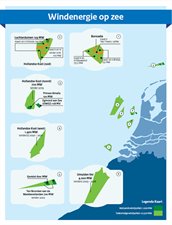Studying seabird flight patterns in offshore wind farms
Collisions with wind turbines, both onshore and offshore, are usually fatal for seabirds. This is a major ecological concern and we need to know more. Collision risk models (CRMs) are now used in the Environmental Impact Assessment (EIA) process, and in other assessments, to estimate bird mortality on a species-by-species basis.

Photography: Ruben Fijn
Nevertheless, numerous questions surround the results because of limitations in the input data: CRM calculations are based on estimates for a limited number of parameters. In addition, the outcomes can vary widely if there are only minor changes in just a few of the input variables. So field measurements of input parameters, and hard numbers for collisions, are needed to reduce the margin of uncertainty and to validate model outcomes. We need to determine numbers of bird collisions at a site and combine that information with data about flux, flight behaviour (altitude, speed and avoidance), species composition and other relevant factors.
Wozep is working on a programme with Eneco to establish a firm evidence base. We will investigate real-time collisions, flight patterns and avoidance in and around the offshore windfarm Eneco Luchterduinen. Eneco will use a radar at the platform and 4 cameras on different turbines to study micro- and meso avoidance, flight behaviour and collisions. The Wozep part of the programme focuses on fluxes and macro-avoidance on the periphery of the wind farm, using horizontal and vertical radar installations on a turbine on the edge of the farm. The combined set-up of the Eneco and Wozep projects will resemble the ORJIP project at the Thanet wind farm in North Sea in the UK. Bureau Waardenburg won the tender for this project and has started the optimisation and validation process for the WOZEP radar installations. Once this process has been completed, the radar installations can start collecting data in the spring of 2019 over a period of at least two years.
 Figure 1: Location of wind farm Luchterduinen in which the research takes place (source: RVO)
Figure 1: Location of wind farm Luchterduinen in which the research takes place (source: RVO)